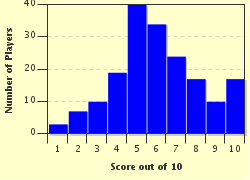Quiz Answer Key and Fun Facts
1. Spinel comes in red, orange, yellow, brown, blue, violet, purple, green and black. What is the colour of its streak?
2. Citrine is available in a light yellow to dark yellow range as well as a gold brown, what is its hardness on Mohs' scale?
3. What is the chemical composition of peridot?
4. Aquamarine is the stone which is associated with March but what colour is its range?
5. What is the hardness of moonstone according to Mohs' scale?
6. Diamonds are a girl's best friend but what kind of cleavage does it have?
7. What gemstone is the fossilized resin of pine trees sometimes containing insects dating as far back as the Lower Cretaceous period, approximately 146 million years ago?
8. What is the difference in the chemical composition between amethyst and citrine?
9. Apart from the opal, what is the modern birthstone for October?
10. Which gemstone is formed when an irritant enters the soft tissues of a mollusk?
Source: Author
Stampede_Gal
This quiz was reviewed by FunTrivia editor
LeoDaVinci before going online.
Any errors found in FunTrivia content are routinely corrected through our feedback system.

